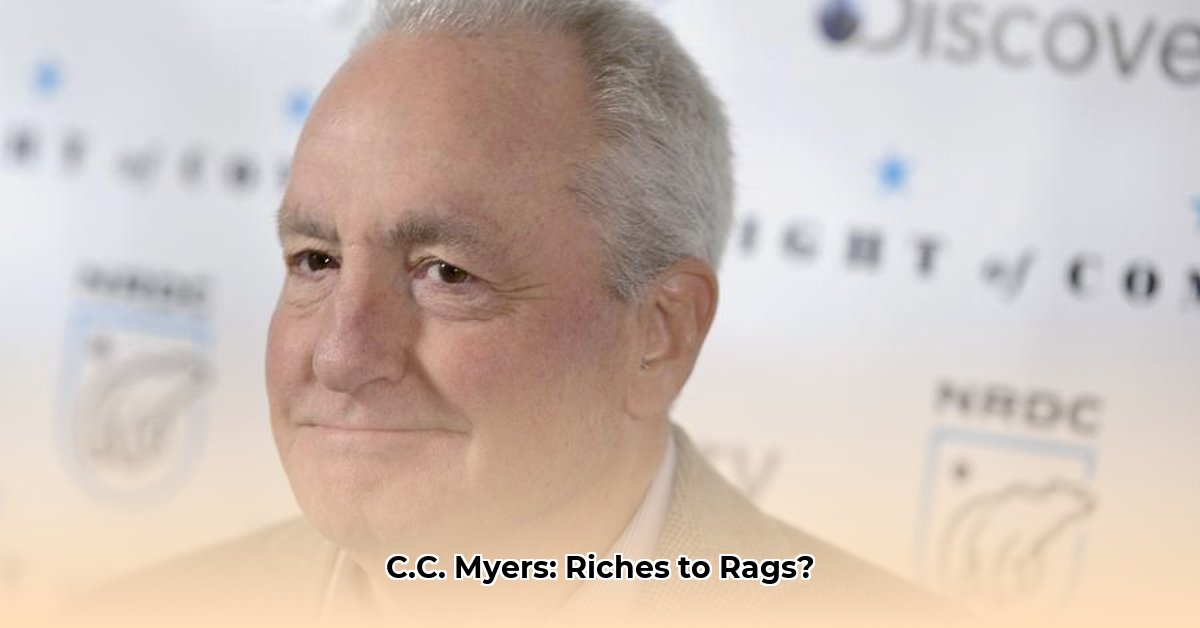
C.C. Myers: A Construction Giant's Rise and Fall
C.C. Myers, Inc. once dominated California's construction landscape. Their story, however, isn't simply about accumulating wealth—although the implied net worth is staggering—but about the dizzying heights of success and the devastating consequences of unchecked ambition. While the precise figure of C.C. Myers' net worth remains elusive, the narrative of their rise and fall offers invaluable lessons in business strategy, risk management, and the delicate balance between speed and sustainability. For more on C.C. Myers' net worth, check out this resource. This case study analyzes the factors contributing to C.C. Myers' phenomenal success and its subsequent collapse, offering actionable insights for businesses across various sectors. How did a company known for its breakneck speed ultimately fail? The answer lies in understanding the interplay of aggressive growth strategies, innovative approaches, and the inherent risks within the construction industry.
Building an Empire on Speed and Employee Ownership
C.C. Myers, Inc.'s success stemmed from an unparalleled commitment to speed. Projects that took competitors months were completed in weeks. This remarkable efficiency, driven by meticulous planning and a highly motivated workforce, secured lucrative contracts, particularly with the California Department of Transportation (Caltrans). Their expertise in disaster recovery further solidified their reputation, as they played a crucial role in rebuilding California's infrastructure after major earthquakes. Further bolstering their success was their innovative Employee Stock Ownership Plan (ESOP), which fostered extraordinary loyalty and a collaborative work environment—a rarity in the construction industry. This fostered a sense of shared ownership, directly tying employee motivation to the company's overall success.
But did this breakneck pace come at a cost? The answer, unfortunately, is yes. Were there warning signs that the company's rapid expansion could lead to trouble? The later sections of this case study will explore these questions in greater detail.
The Cracks in the Foundation: Overextension and Unsustainable Growth
The relentless pursuit of speed, while initially rewarding, sowed the seeds of C.C. Myers' eventual downfall. Aggressive bidding practices, prioritizing rapid completion over thorough cost analysis, may have resulted in significantly lower-than-expected profit margins. Coupled with this, legal challenges and difficulties in unrelated business ventures further strained the company's financial stability.
The pressure to maintain this unsustainable pace of growth in a cyclical industry like construction proved insurmountable. The company's high-stakes game of fast-track projects and high-volume contracts ultimately led to bankruptcy. This isn't a story of reckless abandon; it is a cautionary tale about the dangers of unchecked ambition and the crucial need for sustainable growth.
Lessons from the Rubble: A Blueprint for Sustainable Success
The rise and fall of C.C. Myers provides crucial lessons for businesses of all sizes, across diverse sectors. What can we learn from their experience? The key takeaways are far-reaching and applicable beyond mere construction practices.
Key Learnings for Construction Firms:
- Diversification: Don't rely solely on fast-track projects; a balanced portfolio mitigates risk.
- Risk Management: Implement robust risk assessment and management strategies. Speed should never compromise quality or safety.
- Sustainable Growth: Prioritize long-term stability over short-term gains. Meticulous planning is essential.
Guidance for Government Agencies:
- Contract Terms: Avoid unrealistic timelines that encourage risky bidding practices.
- Project Oversight: Employ rigorous monitoring to ensure compliance and quality control.
Advice for Employees:
- Financial Security: Prioritize financial security and fair compensation regardless of ownership structure. Transparency is key.
For Investors and Creditors:
- Due Diligence: Thoroughly investigate a firm's financials, growth trajectory, and risks before investing.
The Elusive Net Worth: A Legacy Beyond Numbers
While the precise figure for C.C. Myers' peak net worth remains unknown, its legacy extends far beyond a simple numerical value. It is a powerful narrative of ingenuity, ambition, and the inherent risks of a rapidly expanding business. The story serves as a cautionary reminder that true success goes beyond financial accumulation; it's about building a sustainable and enduring legacy.
Risk Assessment Summary:
| Factor | Risk Level | Mitigation |
|---|---|---|
| Speed-Focused Construction | High | Robust planning, phased implementation, contingency planning |
| Emergency Response Contracts | High | Detailed contracts, pre-qualification, resource allocation planning |
| ESOP Model | Medium | Strong financial controls, employee education, transparent communication |
| Aggressive Bidding Strategies | Medium | Comprehensive market research, accurate cost estimates, diverse project selection |
The C.C. Myers story is a compelling case study emphasizing the need for sustainable growth, risk management, and a balanced approach to ambition. The lessons learned extend far beyond the construction industry, serving as a guiding principle for responsible business practices across all sectors. The company's failure underscores the importance of long-term vision, ethical considerations, and a mindful approach to risk – a lesson that resonates far beyond the realm of construction.